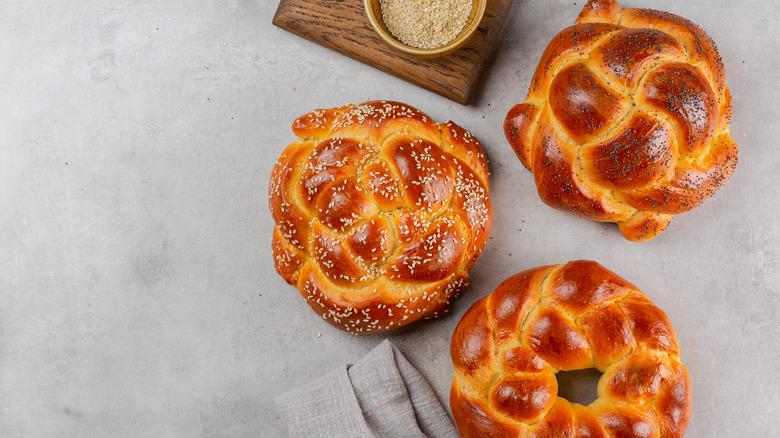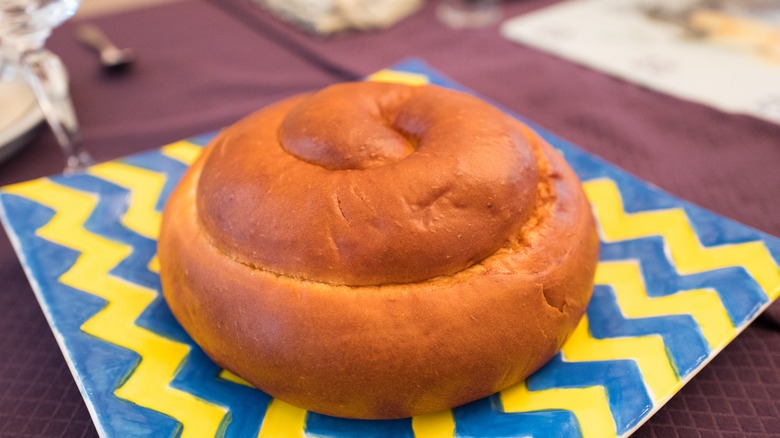The Reason Challah Is Round As Opposed To Braided For Rosh Hashanah
Challah (which is different from brioche) plays an important role in the Jewish community. Whether it's made for the weekly Shabbat dinner or the annual Rosh Hashanah celebration, the sweet bread has a special meaning that differs depending on the event or holiday. Often, Challah is braided, with each of the three strands representing different things. For example, the three strands can represent truth, peace, and justice or six strands (two loaves) can represent the six days of the week besides the holy day. However, during Rosh Hashanah, the Jewish new year, Challah is traditionally served round. So, why is this, and what does this mean?
To find out, we spoke with Amy Emberling, a managing partner at Zingerman's Bakehouse in Ann Arbor, Michigan. Emberling explained the seemingly simple, yet actually quite complex, reason behind Rosh Hashanah Challah: Round Challah represents "the continuity of life and the beginning of a new year," in Emberling's words.
Others echo this sentiment, saying the round Challah represents a prosperous new year, implying a continuation of life. Additionally, some say the circular shape represents the cycle of the seasons, as Rosh Hashanah is held as the season changes from summer to fall. Emberling also mentioned another common iteration of Challah during Rosh Hashanah, ones that are spiral shaped, which she says, "represent the ascent to heaven as well as continuity." Others say this version can also signify continuous progress.
Symbolism and customization of Challah bread
Along with the shape of the Challah symbolizing particular things, Challah bread has a rich history, and even its preparation holds meanings that are important in the Jewish community. For example, when preparing the bread, many will perform a particular blessing – the Hafrashat Challah – which involves removing a small piece of the dough and burning or discarding it after reciting a blessing; this tradition is said to provide blessings to those who perform it. Another way to show symbolism with Challah is to place a cover or napkin over the bread when it is on the table. This custom comes from a story in the Torah and is meant to symbolize dew over the "manna" (divine nourishment). Finally, sesame or poppy seeds sprinkled on top of Challah can represent "manna" falling from the heavens.
One of the best parts of Challah is that, while it's already (usually) slightly sweet, it can also be customized with flavors that can either bring that sweet flavor out more or complement the flavor with something new. For instance, raisins are a common addition to the bread; if you want to try this version, you can follow this Rosh Hashanah Round Raisin Challah Bread from Zingerman's Bakehouse. Or, you could go for a savory version using fresh garlic and rosemary.

